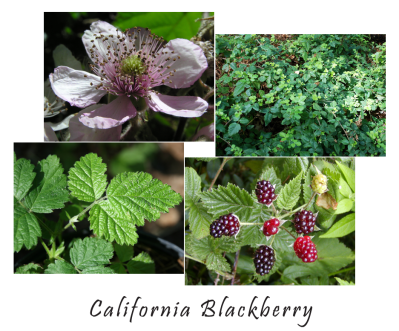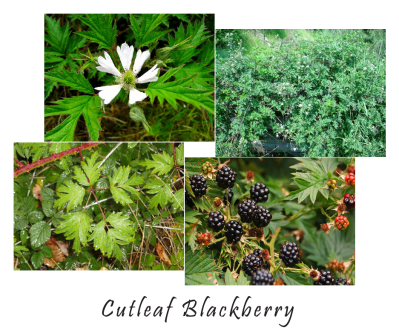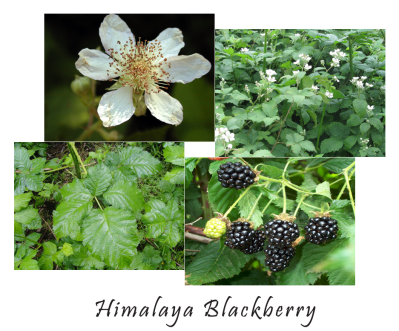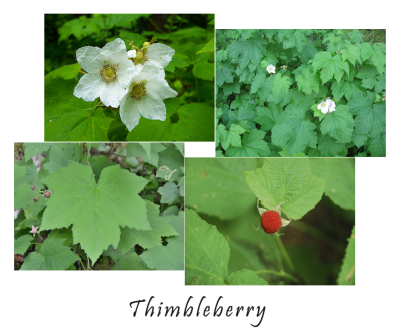Blackberry




Excerpt from “Wild Blackberries” by J. M. DiTomaso, Plant Sciences, UC Davis.
“Of the 11 species of Rubus in California, four were introduced primarily from Eurasia. Four species, however, are considered weeds. Two of these are non-natives, cutleaf blackberry (R. laciniatus) and Himalaya blackberry (R. discolor [formerly known as R. procerus]). In addition, two native species also can be weeds under certain conditions. For example, thimbleberry (R. parviflorus) competes with conifers during establishment in reforested areas, and California blackberry (R. ursinus [formerly known as R. vitifolius]) can infest areas adjacent to streams and ditches. Of these weedy species, the most common, vigorous, and troublesome is Himalaya blackberry.
IMPACT
The scrambling habit of Himalaya and the other vining wild blackberries smothers existing plant growth. In addition, the tangled mass of thorny stems blocks access of humans, livestock, equipment, and vehicles to pastures and waterways. In addition, it can host Pierce’s disease and serve as a vector to movement of the pathogen to other agricultural and nonagricultural areas, including riparian sites.
BIOLOGY
Certain animal species feed on wild blackberries; consequently, seeds spread easily from one area to another in animal droppings. Wild blackberry seeds have a hard seed coat and can remain dormant for an extended period. Once seeds germinate and grow and the plants become established, expansion of the thicket is almost entirely a result of vegetative growth from rhizomes. Over time a single plant can cover a very large area.
MANAGEMENT
Wild blackberries are able to regenerate from the crown or rhizomes following mowing, burning, or herbicide treatment. This makes them difficult to control, and control measures often require follow-up treatment. Land managers often rely on a combination of mechanical and chemical control methods followed by a prescribed burn to dispose of vegetative material.
Because of the extensive underground root system, digging out the plants in a home landscape is a difficult undertaking. Home gardeners generally must rely on foliage-applied herbicide treatments to control an infestation of wild blackberries. One nonchemical option in the home landscape is the use of a rototiller to till the ground several times after the canes have been removed.”
